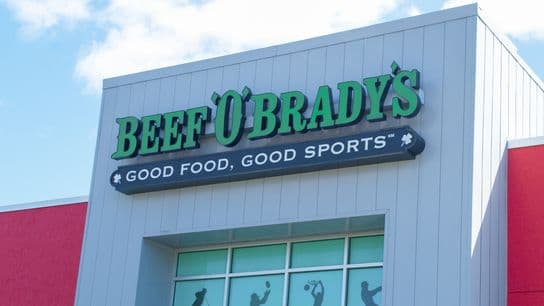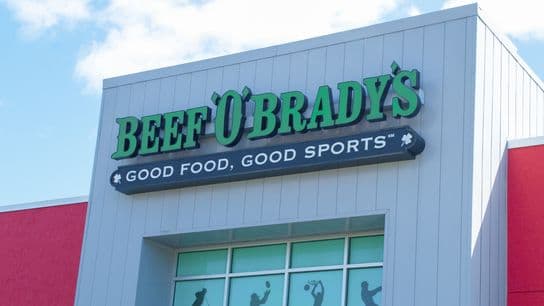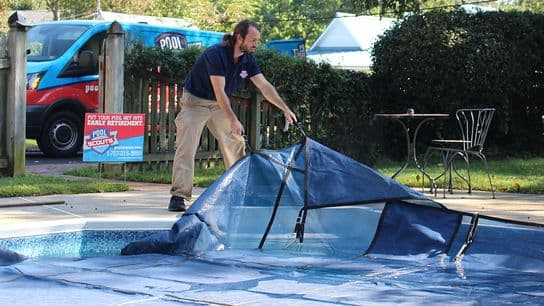What California’s Economic Outlook Means for Franchisors
If you’re a franchisor looking to develop your business in California, you’ll want to consider the state’s policy variables and growth rates when scaling your plans.
This month, ALEC-Laffer published their annual Economic Competitiveness Rankings, which forecasts a state’s current standing within 15 state policy variables. The report features two different rankings: Economic Outlook — a forecast based on a state’s current standing in 15 state policy variables — and Economic Performance — a retrospective measure based on a state’s performance over a 10-year period from 2008 until 2018. For the state of California, these rankings reveal a lot about where the state economy is going and where there is opportunity for their economy to grow.
- 2020 Outlook Ranking: 46
- 2008–2018 Performance Ranking: 17
The State
California's COVID-19 economic recovery is expected to mirror that of the United States as a whole. The state's unemployment rate for the second quarter of 2020 is expected to be 14.6%, according to UCLA Anderson Forecast, settling at 10.5% for the year. Joblessness is expected to decline through 2021 to 8.2%, then 6.8% in 2022. California's job losses hit two sectors — leisure and hospitality, and retail — particularly hard, with fully half of all lost jobs falling into those two categories
The economy of California is the largest in the United States, boasting a $3.2 trillion gross state product as of 2019. If California were a sovereign nation, it would rank as the world's fifth-largest economy. Additionally, California's Silicon Valley is home to some of the world's most valuable technology companies, including Apple, Alphabet Inc. and Facebook. In total, over 10% of Fortune 1000 companies were based in California in 2018, the most of any state.
As both the most populous U.S. state and one of the most climatologically diverse states, the economy of California is varied, with many sizable sectors. The most dominant sectors include finance, business services, government and manufacturing. Much of the economic activity is concentrated in the coastal cities, especially Los Angeles, which has a strong focus on media — and is notably the location of Hollywood. Furthermore, California's Central Valley is one of the most productive agricultural regions on Earth, growing over half the country's fruits, vegetables and nuts.
Making Sense of the Data
What does this mean for California’s economy? To start with the Economic Performance report, the index shows that within the past ten years, California has been outperformed by 45 other state economies. The performance index is based broadly on a state’s performance within State Gross Domestic Product (rank: 5th), Absolute Domestic Migration (rank: 48th) and Non-Farm Payroll Employment (rank: 8th).
The Economic Outlook tells another story about California’s economy. The ranking is based on a state’s current standing in 15 state policy variables. Each of these factors, ranging from sales tax burden to state minimum wage, are influenced directly by state lawmakers through the legislative process. The state’s top marginal income tax rate of 13.30% is the highest in the nation (rank: 50th), its steep tax progressivity (rank: 50th) and its high minimum wage of $12 an hour (rank: 48th) are also at the bottom of the list. California also gets a black mark for not being a right-to-work state. On the plus side, it doesn’t levy an estate tax.
The report indicates that, generally speaking, states that spend and tax less experience higher growth rates than states that spend and tax more. While this is an important finding for entrepreneurs looking to start their own business, it shouldn’t discourage them from investing in the franchise of their dreams if they're in a market with a slower growth rate.
When it comes to deciding where franchisors should develop their brand, it’s always important to look at the complete picture of what the region has to offer. Although California has been behind in outlook, the state will continue to be a desirable place to live because of its large and diverse economy.
Franchise Growth Plans
So what should franchisors do with this information? Though most franchisors take a shotgun approach — meaning wherever a prospect franchisee inquires, the franchisor will typically entertain that marketplace — the strategy of looking at these overall policies can help them scale their business at a more efficient rate. With that said, the findings within the report should not be the deciding measure for franchisors, but they should play a role in the decision.
Famous Dave’s*
- Current units in state: 13
- Growth capacity in state: 20
- Total jobs created at max growth capacity: 1,000
Al Hank, senior vice president of operations of BBQ franchise Famous Dave’s, also notes that California has been a prime target market for the brand.
"Given the recent trends over the past two years and the resiliency of the Famous Dave's brand through the pandemic, growth is the focal point for us moving forward,” he said. “We're excited to enter new markets and enter into new territories by utilizing data, demographics and foot traffic to find the best locations possible."
Big Blue Swim School*
- Current units in state: 0
- Growth capacity in state: 50
- Total jobs created (at max growth capacity): 1750
Scott Thompson, CDO for the swim school franchise, Big Blue Swim School, notes that the brand has identified the state as perfect for franchise growth.
“For each of the brands we work with we look at the data first,” said Thompson. “The metrics we typically look at are the total target addressable markets for the brand, typical penetration rates of the target addressable markets, number of customers needed to have a successful unit model, total density of customer base, discretionary income, median income and median home values. These are just a few metrics we look at before we select a market to grow in.”
Franchise Brands Headquartered in California
- 1-800-DRYCARPET Carpet Cleaning
- 1st Propane Franchising, Inc.
- 18/8 Fine Men's Salon
- 1Heart Caregivier Services
- 800 Degrees Pizzeria
- 911 Restoration
- The Pool Doctors
- Red Brick Pizza
- The Glass Guru
- Bellacures Franchising LLC
- Blendz Franchise System Inc.
- Amazing Athletess
- Barbeques Galore
- A Right Place for Seniors
- Blast 825 Pizza
- Baja Fresh Mexican Grill
- Aussie Pet Mobile
- Blast & Brew
- AIM Mail Centers
- Ace Duraflow Systems
- Big Air Franchising
- Beverly Hills Weight Loss & Wellness
- Asante Real Estate Group
- Black Bear Diners
- Bally Fitness Franchising, Inc.
- American Leak Detection
- Blaze Pizza
- Bingo Lingo
- Always Best Care Senior Services
- BareBones WorkWear
- Beeline Bikes
- Annex Brands
- Assist U2 Build
- ACFN - The ATM Franchise Business
- Apricot Lane
- Al & Ed's Autosound
- Bar-B-Clean
- Blizz Yogurt
- Bowl of Heaven
- Bubba Gump Shrimp Co.
- Budget Blinds
- BumperDoc
- California Closet Company, Inc.
- California Pizza Kitchen
- Carlsbad Ranch Market
- Cartridge World
- Cauldron Ice Cream
- Chevys Fresh Mex
- Chronic Tacos
- Closet Tailors
- Closets By Design
- Club Pilates
- COIT Drapery & Carpet Cleaners
- Color Me Mine Enterprises
- Colton's Steak House & Grill
- Concerto Networks, Inc.
- CosmiKids
- The Counter Gourmet Burgers
- CRATE Franchise Systems, Inc.
- CREAM
- Creamistry
- Cybertary
- Daphne's California Greek
- Del Taco
- Dine in 2Nite
- DineEquity
- Dog Haus
- Donut Bar
- Doubletree
- Doughboys Franchising
- Farmer Boys Restaurants
- Fatburger Corporation
- EagleRider
- El Pollo Loco, Inc.
- Erik's DeliCafe Franchises
- Extreme Pizza
- FASTFRAME USA INC.
- Fiesta Auto Insurance
- Fit Body Boot Camp
- Fit4Mom
- Fitwize 4 Kids
- Fitwall
- Flame Broiler
- Flat Rate Realty
- Flemingt's Prime Steakhouse / Bloomin' Brands
- Floods4Less
- Franchise Services Inc.
- eFresh Healthy Vending
- Frsteam
- G J Gardner
- Garage Experts
- Generation NEXT
- The Glass Guru
- Gloria Jean's Coffees
- Go Mini's Portable Storage & Moving
- Great American Deals
- Grins 2 Go
- Growing Roots
- Gymboree Play & Music
- Hammer & Nails
- Hampton Inn/Hampton Inn & Suites
- Handle With Care Packaging Store
- Happi House
- Help-U-Sell Real Estate
- Hi-Five Sports
- Home Care Assistance
- Home Franchise Concepts
- Homewood Suites by Hilton
- Hot Dog On A Stick
- House of Bread
- HUMAN Healthy Vending
- IHOP
- Instant Imprints
- Intero Real Estate
- iSold It eBay Store
- It's a Grind Coffee Shop
- Jack in the Box Inc.
- Jamba Juice
- Java Detour
- Jazzercise
- Jenny Craig
- Jimboy's Tacos
- Johnny Rockets Group, Inc., The
- Juice It Up Franchise Corp.
- Junk King
- KaBloom Florists
- KidsPark
- La Salsa Fresh Mexican Grill
- Lee's Sandwiches
- LemonShark Poke
- Lite For Life
- LiveHome
- Mathnasium* Learning Centers
- Max Muscle Sports
- Menchie's
- Me-N-Ed's Pizzerias
- Merle Norman Cosmetics
- Millennium Dance Franchising
- Money Mailer, LLC
- Mr. Pickle's Sandwich Shop
- Mustard Café
- My Gym Children's Fitness Centers
- Naturell
- Nekter Juice Bar
- New Horizons Computer Learning Centers, Inc.
- New York NY Fresh Deli
- Nifty after Fifty
- NorthStar
- Octoclean
- Ohana Brothers
- Online Trading Academy
- Paris Baguette*
- Parcel Plus
- Parker Anderson
- Pastalini
- Party America
- Persona Wood Fired
- Philly's Best
- Pickup USA
- Pink Iron
- Pinkberry
- Pieology
- PIP Printing
- Pizza Factory
- Pizza Studio
- PizzaRev
- Play 'N Trade
- Pokeatery
- Postal Connections of America
- Powell's Sweet Shop
- PrideStaff Staffing
- Professor Egghead
- Quik Drop
- Realty World
- Redbrick Pizza
- Relax The Back Corporation
- Remedy Intelligent Staffing
- Renovation Realty
- Robeks Franchise Corporation
- Rockin Baja Lobster
- Rocket Fizz
- Rockin' Crepes
- Rockin' Jump
- Rounds Premium Burgers
- Round Table Pizza
- Rubio's Fresh Mexican Grill
- Ruby's Franchise Systems, Inc.
- School of Rock*
- Sky Zone
- Screenmobile
- Senior Care Authority
- Shakey's Pizza
- Sir Speedy, Inc.
- Sizzler USA
- Slapfish
- Sprinkler Repair Guy
- Stained Glass Overlay
- Stratus Building Solutions
- Straw Hat Pizza
- Submarina Sandwiches
- Sunshine Pack and Ship
- Sushi Freak
- Sweet Arleens
- Sweet Factory
- Sydnee's Pet Grooming
- Taco Bell Corporation
- Tailored Living
- Tax Tiger
- TeamLogic IT
- TechKnowHow
- TGA Premier Junior Golf/Sports
- The Bar Method
- The Carving Board
- The Closet Factory
- The Coffee Bean & Tea Leaf
- The Dentist's Choice
- The Habit Burger Grill
- The Pie Hole
- The Pizza Press
- UPS Store, The
- TheCoderSchool
- Togo's Eateries
- Top Round Roast
- TOPZ Healthier Burger
- UFC Gym
- Una Mas
- Uniglobe Travel (International) Inc.
- Vanguard Cleaning Systems, Inc.
- Velocity Sports Performance
- Vitality Bowls
- VivoPools
- Wahoo's Fish Tacos
- We Olive
- Wetzel's Pretzels
- Wheel Fun Rentals
- Wienerschnitzel
- Winchell's Donut House
- Winnie Couture
- YAS Fitness Centers
- Yakety Yak Wireless
- Yes! Solar Solutions
- Yogurtland
- Yummy Cakes
- Z Pizza
- Zizzos Coffee
- Zoom Room
*This brand is a paid partner of 1851 Franchise. For more information on paid partnerships please click here.









